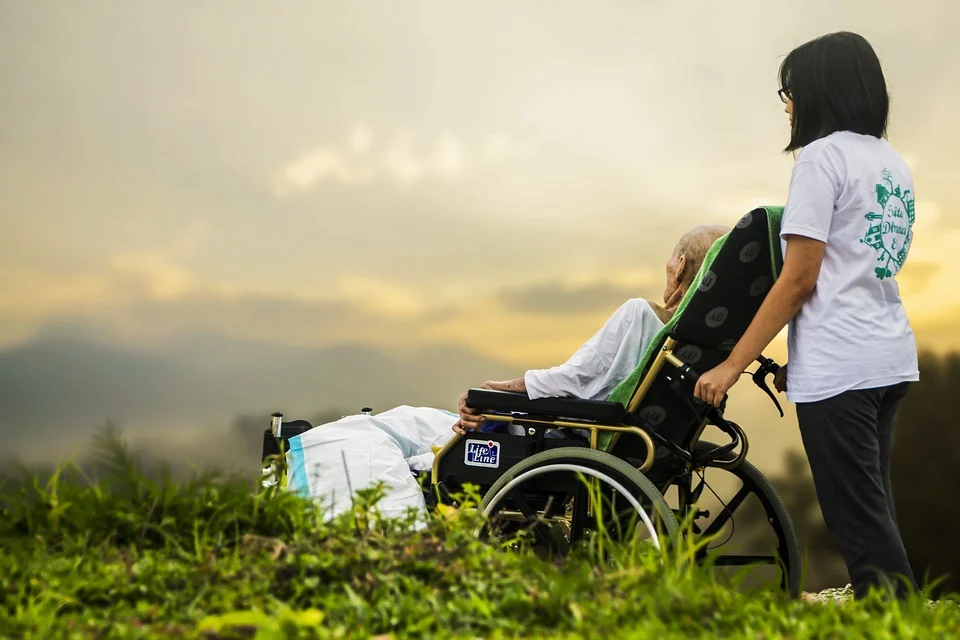Exercises for persons with disabilities
Exercises for people with disabilities, despite their limitations, can help improve bone strength, mobility, and energy levels. It can be difficult to exercise due to a disability, so finding a way to exercise with your doctor can be helpful. Your doctor may be able to prescribe exercises that are specifically tailored for your disability. There are many other ways to get active. Here are five easy exercises that you can do at your home.
Sitting-to-stand: This exercise focuses attention on the upper back. For this exercise, sit upright in a chair with arms at a 90-degree angle. Your hand should be against your ear. Now, slowly extend your arm upwards. Repeat this exercise. You can also do this exercise in a second chair. It can be difficult so choose one you’re comfortable with. It can help you improve mobility and muscle strength in your lower bodies.

Exercises for people with mobility problems
Regular exercise is beneficial for people with disabilities. Exercise can improve mood, ease depression, and relieve stress. It can also improve self-esteem and outlook. A physical therapist may be able provide safe exercises for people with mobility issues. You can also find an exercise class that suits your needs. There are many benefits to doing Exercises For Disabled People.
Exercises for people with mobility issues focus on building muscle mass. Some require controlled movements, while others are gentle. Others are more strenuous, requiring more time and effort. Chair Stand is a good example. It involves slowly standing from a chair and then sitting down while you control a specific set of muscles. This exercise is associated with bulky biceps and heavy weight. It is especially beneficial to those with restricted range of motion.
Exercises for Parkinson’s patients
People with PD may be able to benefit from physical therapy that includes a variety of exercises to increase their strength and endurance. While it won’t halt the disease, exercise will help to keep muscles and joints strong, improve balance, and prevent stiffening of joints. People with PD can be given a personalized exercise program by physical therapists. These exercises can help people live happy, active lives. Here are some tips for getting started:
Stretching is an important part of the program to prevent injury, increase flexibility, and strengthen the central nervous system. It may be a good alternative for people with more advanced symptoms of Parkinson’s disease. These exercises can be performed several times daily to reap the maximum benefits. If possible, lean on a hard surface to reduce pressure on weak muscles. You can also do exercises on an elliptical, treadmill, or bike.
For people with mobility issues, strength training exercises
Many benefits are found from strength training exercises for people with mobility issues. Mobility exercises not only help improve mobility, but they also help prepare the body for the work to come. A walking spiderman can use an overhead reach, or a half-kneeling arms rotation to pair well with squats. Mobility exercises vary based on the movement patterns of each individual. These exercises can be used as a filler exercise between strength training.
As we age, our mobility diminishes. Strengthening our muscles and joints can improve our range-of-motion without increasing stiffness. This means that a mobile joint can absorb more force and protect our bodies from further mobility loss. When we are restricted in mobility, our bodies compensate for this, which causes injuries and pain. Mobility exercises can help prevent this from happening. Mobility training allows you to get more out of your workouts. You can also achieve better results.
Stretching exercises are for people with mobility impairments
Stretches can be a great option for those who are unable to exercise or have mobility issues. These are gentle but effective movements that can relieve muscle tension and joint stiffness. They can be done anywhere, on your couch, on a floor, and without any special equipment. These exercises can be adapted to suit your body and abilities. Try standing stretches, sitting stretches, or floor squats. If you have limited space, a chair can be used.
Crossing the ankle over the knee is another great stretching exercise for people who have mobility issues. This exercise is especially beneficial for people who have difficulty getting up and down from a chair. Simply lift your leg straight up and then rotate your chest toward your knee. Try this exercise several times, and you’ll find it easier than you thought. Depending on the nature and severity of your mobility problems, you might need assistance in holding the stretch.
People with disabilities face barriers to exercising
This study examined the barriers and facilitators that prevent people with disabilities from participating in physical activities. Participants included recreation professionals, city planners and park district managers. Focus groups were held in 10 regional areas in 2001-2002, and participants were asked to identify the barriers that prevent people with disabilities from participating in physical activities. Age, knowledge, lack of energy, injury, and other factors were all barriers to physical activity. Facilitators included the benefits that physical activity can bring, such a better health.
Despite technological advances and increased accessibility, there are still barriers that prevent people with disabilities from exercising. Many physical barriers keep people with disabilities from engaging in regular physical activity. These include inaccessible facilities and fear of injury. However, proper nutrition is vital for maintaining a healthy body and keeping motivation levels high. Listed below are several exercises that people with disabilities can perform while sitting or in a wheelchair. These exercises will improve their overall strength and endurance.
